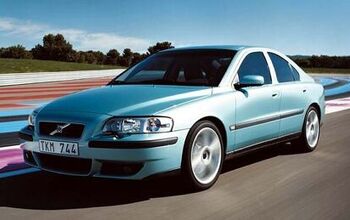Where Does the Industry Go From Here?

With all domestic assembly plants shuttered for some length of time and sales barreling towards zero in many markets at the end of March, the coming few months could play out in a number of ways. Sure, no crystal ball can be expected to return bang-on predictions, but that’s not stopping analysts from crafting a number of plausible scenarios.
As projected by J.D. Power, April looks like a wash for new vehicle sales, but the recovery could be more rapid than some fear. Or, just as easily, it might not be.
In a Wednesday webinar, the firm’s data and analytics gurus laid out the range of possibilities. With the month of March already showing a 43-percent year-over-year drop in U.S. retail vehicle purchases (a 37-percent decline over the pre-virus forecast for the month), J.D. Power sees near-blanket stay-at-home orders suppressing April sales severely.
Compared to the pre-virus forecast, April looks to undercut that earlier total by 80 percent. Between March and July, the firm predicts a volume loss of 1.6 to 2.4 million sales — enough to sink 2020’s full-year total by 10 to 30 percent.
We’re entering “a period of extraordinary uncertainty,” said Thomas King, president of J.D. Power’s Data & Analytics division. Key factors include exactly when state-level stay-at-home orders lift, and the economic environment that exists in the U.S. “after people are allowed to go back into showrooms.”
King says it’s unlikely governments and OEMs will be able to stabilize the sales situation via stimulus measures, meaning the industry won’t be back to pre-virus levels until next year.
But back to the coming few months. J.D. Power mapped out three scenarios: a low-impact scenario, a moderate one, and a severe case. In May, the low end of the range shows sales down 30 percent compared to the pre-virus forecast. The moderate scenario calls for a 42-percent drop over the previous forecast. A worst-case situation spells a 68-percent drop — hardly a rebound from April’s 80-percent drop.
June is another story, with the range running between zero and 18 percent (8 percent in the moderate scenario). Come July, only the worst-case projection shows any drop below the pre-virus retail forecast, and that’s only by 5 percent. Time will tell, though the firm says, at least for full-year sales, that the lower end of the volume range seems the more likely bet. That means the industry is on track to fall closer to the 12.1 million projected full-year sales, rather than somewhere near the 14.8 million mark.
One thing waiting to assist automakers and dealers is the 1.8 million Americans whose leases expire between March and July.
The punchline to all of this, King said, is that there’ll be no inventory constraints when dealers reopen. Strong pickup demand seen in March — despite a huge overall industry drop — will likely make that segment a priority when plants come back online, King added.
[Image: General Motors]

More by Steph Willems
Latest Car Reviews
Read moreLatest Product Reviews
Read moreRecent Comments
- UnoGeeks Great information. Unogeeks is the top SAP ABAP Training Institute, which provides the best SAP ABAP Training
- ToolGuy This thing here is interesting.For example, I can select "Historical" and "EV stock" and "Cars" and "USA" and see how many BEVs and PHEVs were on U.S. roads from 2010 to 2023."EV stock share" is also interesting. Or perhaps you prefer "EV sales share".If you are in the U.S., whatever you do, do not select "World" in the 'Region' dropdown. It might blow your small insular mind. 😉
- ToolGuy This podcast was pretty interesting. I listened to it this morning, and now I am commenting. Listened to the podcast, now commenting on the podcast. See how this works? LOL.
- VoGhost If you want this to succeed, enlarge the battery and make the vehicle in Spartanburg so you buyers get the $7,500 discount.
- Jeff Look at the the 65 and 66 Pontiacs some of the most beautiful and well made Pontiacs. 66 Olds Toronado and 67 Cadillac Eldorado were beautiful as well. Mercury had some really nice looking cars during the 60s as well. The 69 thru 72 Grand Prix were nice along with the first generation of Monte Carlo 70 thru 72. Midsize GM cars were nice as well.The 69s were still good but the cheapening started in 68. Even the 70s GMs were good but fit and finish took a dive especially the interiors with more plastics and more shared interiors.



































Comments
Join the conversation
Where does the industry go from here? Probably to DC to ask for a bailout like every other company on the planet.
first order of business for GM should be to at the very least redesign the mirrors on the HD trucks - that should be quick and easy. Oh and have an adult do the design.